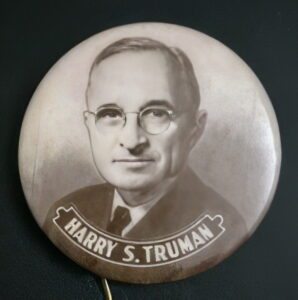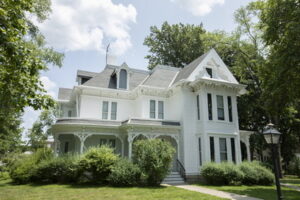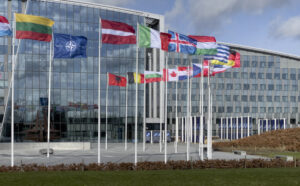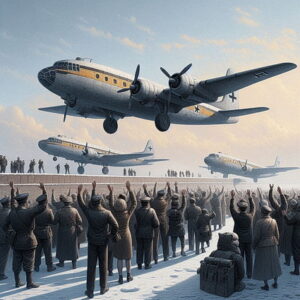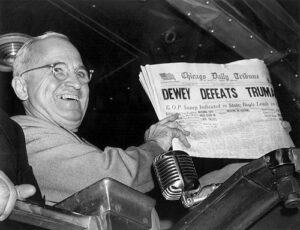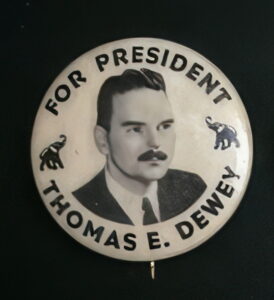
Thomas Dewey, the Republican governor of New York, is most famously remembered for his 1948 presidential election loss to Harry S. Truman, cemented in the iconic “Dewey Defeats Truman” headline. However, Dewey’s political career and influence extended far beyond this moment.
Dewey was a prominent figure in the Republican Party, known for his reputation as a “gangbuster” prosecutor in New York City during the 1930s. His intense focus on organized crime concerned the New York mobsters of that era, and discussions ensued about what to do about it.
One gangster, Dutch Schultz, took Dewey’s organized crime attacks so seriously that he became adamant about eliminating him. The recently created ‘committee’ voted against it, fearing law enforcement would target them, but Schultz stood steadfast with his assassination decree. He stormed out of the room, saying he would take care of it himself. This led to Shultz’s assassination by the syndicate.
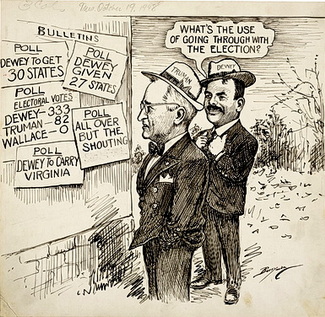
Dewey was propelled into the governorship of New York, where he established a record of efficient and progressive administration. In 1944, Dewey received the Republican presidential nomination, challenging Franklin D. Roosevelt during World War II. Though he lost the election, his strong showing solidified his position as a leading Republican figure.
Thomas E. Dewey was a two-time Republican presidential nominee who played a significant role in mid-20th-century American politics. As the Governor of New York and a tough-on-crime prosecutor, Dewey was widely respected within the Party. He ran again in 1948 against Harry Truman, with his second campaign being one of the most famous upsets in U.S. history. Although he never won the presidency, his influence shaped the Republican Party for years.

